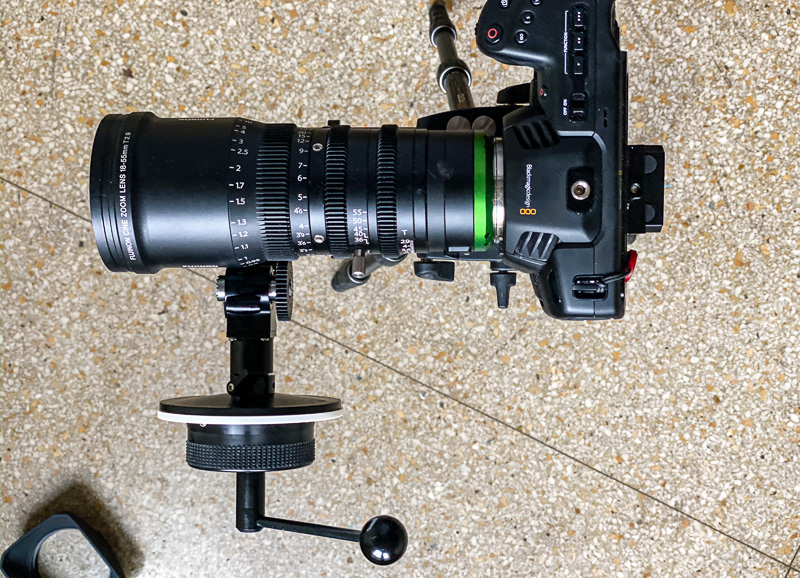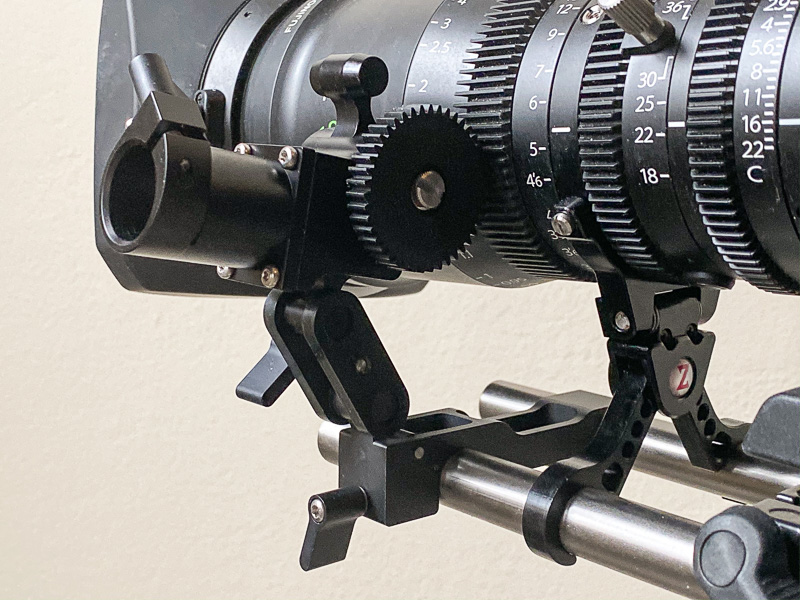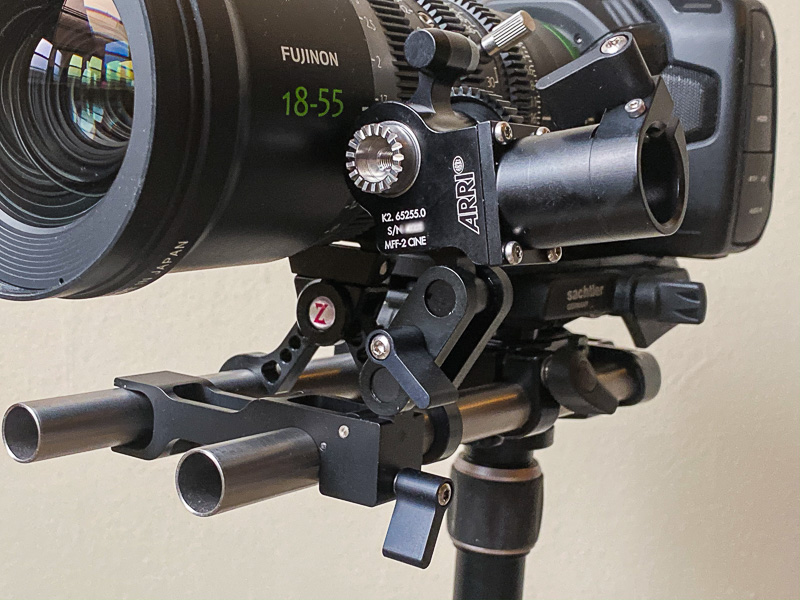Here are phone snaps of the camera with Arri’s Mini Follow Focus (MFF-2). This is split into two posts due to attachment limits.
This is the last of my posts on putting the Pocket 4K and the Fujinon lens together as a package.
I’m going to use the term follow focus, but the MFF-2 can also be used to make precise changes in focal length (zooming) or iris/aperture. The latter is rare and I don’t see much need for it myself. However, for those who are interested, there’s a video nine posts up about a new device specifically designed to change iris, and therefore apparent depth of field, during a shot.
Based on my limited time with the Arri, I think that follow focus is all about rigidity, and not just of the follow focus unit. It seems clear that the ideal setup is to mount the camera on a solid tripod with no flex in the tripod head, the rods, the lens support and the follow focus itself. With the camera on a monopod, on a shoulder mount or handheld, I think that rigidity in the rods, lens support and follow focus remains important for optimal follow focus performance.
Arri’s follow focus is precisely machined, all metal except for the gear that engages with the teeth on the lens barrel. As I understand it, the gear is made of DuPont Delrin, a strong plastic sometimes used instead of metal. The follow focus is supported by both camera rods, not just one. A plastic or single rod follow focus may be fine, but based on what I’ve seen of the Arri I would want to be satisfied, before purchase, of sufficient rigidity and precision.
For me, the follow focus has two advantages over using my hand directly on the lens barrel. The Fujinon has 270° of focus rotation, and the focal length ranges from 18mm to 55mm (about 34mm to 105mm in 35mm full frame). Using the follow focus to manage this feels more natural/less awkward. It’s also easier to be smooth and precise. I’m sold, but whether these advantages are worth the cost seems very much an individual decision.
I can’t make any sense of follow focus prices, which range from under US$100 to thousands. I purchased this one second-hand. For me, the new price is in nosebleed territory. On the upside, I expect this to be the first and last follow focus that I’ll purchase. I needed a couple of new parts to put this follow focus together the way that I want. I learned that in North America, where I live, Arri parts, if needed, can be obtained fairly quickly. I also expect that Arri can replace any part of this unit that is damaged or worn out.
It appears that a lot of people, especially people who use a gimbal, are moving to wireless follow focus. Personally, I’m not there. I don’t want the motor, the power demand, the electronic controller, the potential noise or the hassle if a wireless follow focus goes on strike. However, apart from a Freefly Movi Cinema Robot that I occasionally use with my smartphone or a Sony RX0, I also don’t own a gimbal, so for me it’s not a real issue that I need to address.
Now the photos. Please note that the tripod in these photos is good for showing components, but I think that it’s too lightweight to use when shooting with the Pocket 4K and Fujinon lens.
Top View

- top-view.jpg (337.05 KiB) Viewed 22915 times
Arri MFF-2 rod support, arm and gear from the rear and the front

- camera side.jpg (232.88 KiB) Viewed 22915 times

- camera-front.jpg (231.27 KiB) Viewed 22915 times
As noted above, the follow focus is supported by both rods. The arm is easily adjusted to fit various heights and diameters of lens barrel. The follow focus gear can be mounted on either side of the arm to help avoid conflicts with other camera components. Indeed, the setup in the photo avoids conflict with the Zacuto lens support. The gear in the photo has 43 teeth. Arri sells additional gears, but I’ll need more experience with the unit before deciding whether I want any of them.
CONTINUED IN NEXT POST...






